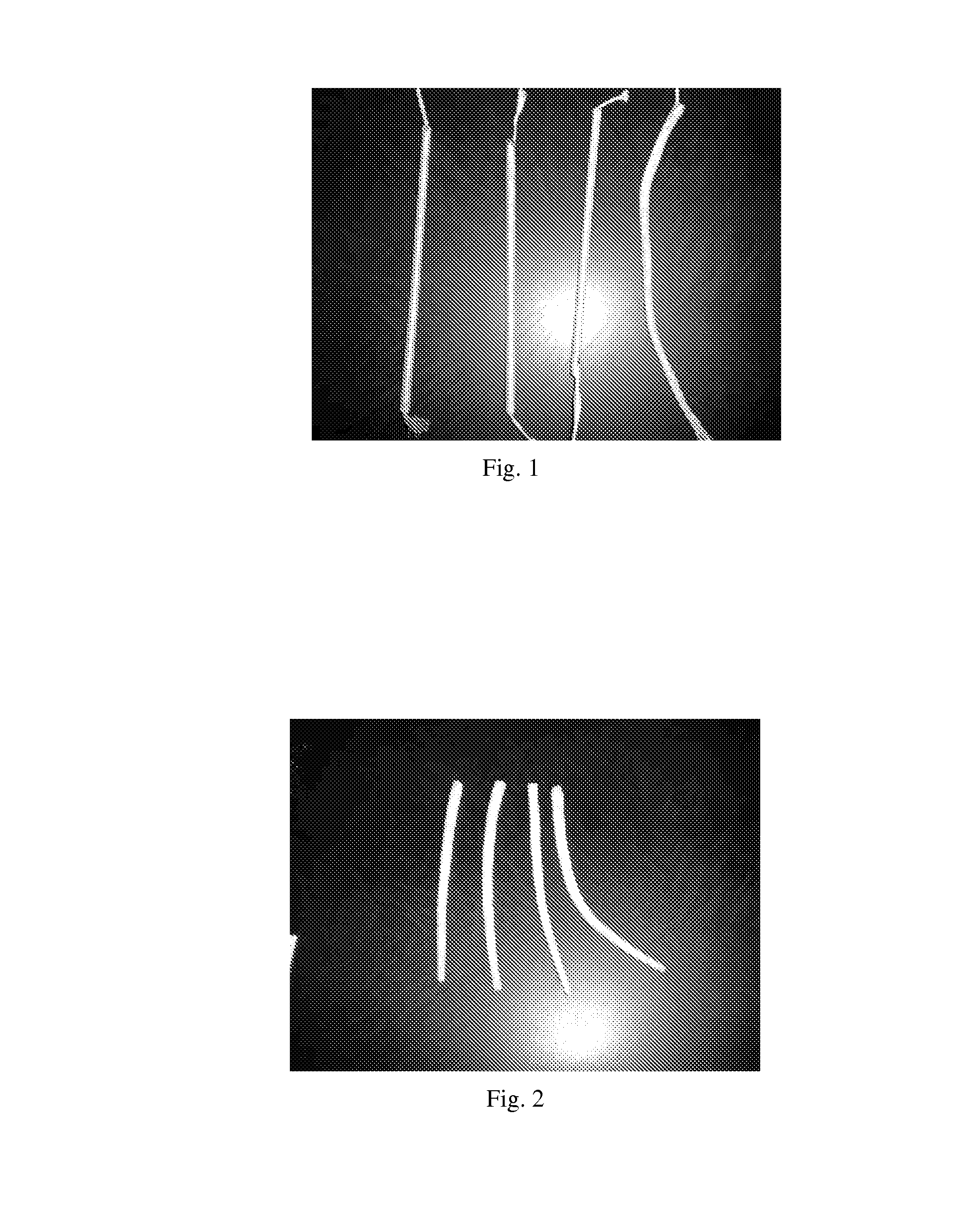High-strength biological scaffold material and preparation method thereof
a biological scaffold and high-strength technology, applied in the field of biological scaffold preparation, can solve the problems of low surgical success rate, huge physical and psychological problems of patients, and defects of extreme pain during treatment, and achieve the effect of improving the mechanical strength of the material
- Summary
- Abstract
- Description
- Claims
- Application Information
AI Technical Summary
Benefits of technology
Problems solved by technology
Method used
Image
Examples
example 1
[0045]In this example, the silk fibroin porous scaffold is prepared according to the following steps:
[0046]1) 5 g of cocoons are added to 2 liters of a sodium carbonate solution having a mass concentration of 0.5%, treated at 98 to 100° C. for 40 min to remove the external sericin, and sufficiently washed to obtain pure silk fibroin.
[0047]2) The degummed silk fibroin (also referred to as “boiled-off silk”) is woven into a tubular material having a diameter of 4 mm by a textile machine to form a framework, the weave density of the material is such that the distance between adjacent warp boiled-off silks is about 1 mm, and the distance between adjacent weft boiled-off silks is about 1 mm. The tubular material is placed into a repair plug mold having a diameter of 5 mm.
[0048]3) The dried silk fibroin is dissolved into a 9.3 mol / L lithium bromide solution at about 60° C., to obtain a fibroin mixed solution. The fibroin mixed solution is added to a cellulose dialysis membrane, and dialys...
example 2
[0058]5 g of cocoons are added to 2 liters of a sodium carbonate solution having a mass concentration of 0.5%, treated at 98 to 100° C. for 40 min to remove the external sericin, and sufficiently washed to obtain pure silk fibroin.
[0059]The degummed silk fibroin (also referred to as “boiled-off silk”) is woven into a tubular material having a diameter of 3 mm by a textile machine The tubular material is placed into a conical repair plug mold having an upper diameter of 3 mm and a lower diameter of 5 mm.
[0060]The dried silk fibroin is dissolved into a 9.3 mol / L lithium bromide solution at about 60° C., to obtain a fibroin mixed solution. The fibroin mixed solution is added to a cellulose dialysis membrane, and dialysized with deionized water to remove lithium bromide. Thus, a pure aqueous silk fibroin solution is obtained.
[0061]The mass concentration of the silk fibroin is adjusted to 4%, and the aqueous solution is placed at 4° C. for 1 hour, such that the solution temperature is st...
example 3
[0067]5 g of cocoons are added to 2 liters of a sodium carbonate solution having a mass concentration of 0.5%, treated at 98 to 100° C. for 40 min to remove the external sericin, and sufficiently washed to obtain pure silk fibroin.
[0068]The degummed silk fibroin (also referred to as “boiled-off silk”) is woven into a tubular material having a diameter of 4 mm by a textile machine The tubular material is placed into a conical repair plug mold.
[0069]The dried silk fibroin is dissolved into a 9.3 mol / L lithium bromide solution at about 60° C., to obtain a fibroin mixed solution. The fibroin mixed solution is added to a cellulose dialysis membrane, and dialysized with deionized water to remove lithium bromide. Thus, a pure aqueous silk fibroin solution is obtained.
[0070]The mass concentration of the silk fibroin is adjusted to 4%, and the aqueous solution is placed at 4° C. for 1 hour, such that the solution temperature is stably maintained at 4° C.
[0071]A collagen solution in acetic ac...
PUM
| Property | Measurement | Unit |
|---|---|---|
| thickness | aaaaa | aaaaa |
| thickness | aaaaa | aaaaa |
| porosity | aaaaa | aaaaa |
Abstract
Description
Claims
Application Information
 Login to View More
Login to View More - R&D
- Intellectual Property
- Life Sciences
- Materials
- Tech Scout
- Unparalleled Data Quality
- Higher Quality Content
- 60% Fewer Hallucinations
Browse by: Latest US Patents, China's latest patents, Technical Efficacy Thesaurus, Application Domain, Technology Topic, Popular Technical Reports.
© 2025 PatSnap. All rights reserved.Legal|Privacy policy|Modern Slavery Act Transparency Statement|Sitemap|About US| Contact US: help@patsnap.com



